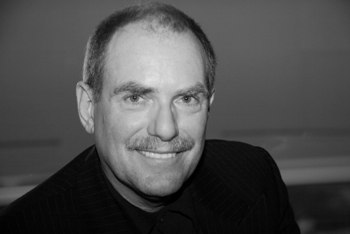Now is the Time for America to Face the Future of Hydrogen Fuel Cell Transportation

"The chances further down the road seem to me better on the fuel-cell side than on the battery-electric side"
There are a number of readers of this blog and members of the audiences when I speak that just seem to think that hydrogen fuel cell autos are a pipe dream that has no chance of becoming a reality in the next decade. Comments like the quote above provoke a general dismissal as not being realistic.
During the last three years, I have forecast that 2010-2015 would begin the age of the electric automobile and that 2015-2020 would begin the age of the hydrogen fuel cell automobile. People accept the first part of that forecast but somehow can't seem to allow themselves to believe that hydrogen fuel cell cars will ever get to scale. There is no question that scalability is a problem for hydrogen fuel cell technologies. There are not enough fueling stations to warrant the production of fuel cell autos and there aren't enough fuel cell autos to warrant the construction of hydrogen fueling stations. Joseph Heller's classic "Catch 22" in full display.
Here and in speeches I have suggested that now is one of those times when the federal government needs to step up and invest in critically needed infrastructure. In the 1930's FDR had the government fund massive projects that created the hydro-electric industry in the U.S. In the 1950s Eisenhower signed the Interstate Highway bill, creating the national highway system that we all rely for personal transport and the transportation of supplies. The Obama administration needs to step up and invest in the creation of a national 21st century energy grid to replace a decrepit collection of regional electric grids that are highly inefficient. Steps have been taken to go down that path. What needs to be added is an investment in a national hydrogen fueling infrastructure so that the two most promising transportation energy sources to replace gasoline, electric and hydrogen can in fact become a reality.
I have spoken with top level executives on the infrastructure side of hydrogen that are willing to invest along side the government to create this grid. They cannot do it themselves but state that the private sector needs the leadership of the federal government to really accelerate an investment strategy. As I wrote in a prior column, comparing the 20th century automotive industry with the 21st century industry, we must support both. We have given $50 billion to GM in hopes they can transform themselves for the 21st century. For one fourth that amount an entire hydrogen fueling infrastructure could be put in place that would assure that every resident in the top 100 metro areas of the US would be less than two miles from a hydrogen fueling station.
If we don't like green house emissions, if we don't like being dependent on foreign oil that funds terrorism, if we want to cut oil consumption – and we must do that as we will run out of the stuff this century – then we must take action.
This is not a pipe dream. Last month at the Frankfurt Auto Show the German government, along with Daimler, Shell Oil, Linde, EnBW, OMV, Total and the German National Organization for Hydrogen and Fuel Cell Technology announced plans to build 1,000 hydrogen fueling stations in Germany by 2015.
Two days before that announcement Toyota, Ford, GM and Hyundai called on energy companies to build an international network of hydrogen fueling stations by 2015. These manufacturers said that by that date there could be hundreds of thousands of fuel cell vehicles on the roads.
Oh, and for additional good measure there are reports that 13 Japanese energy companies are planning or working together to coordinate a national hydrogen fueling network by 2015.
Hmmm, does this sound at all familiar? The German and Japanese auto companies and their infrastructure partners are leading the way in innovation in the transportation sector. It happened over the past 30 years to the auto industry in the US with the ultimate consequence that the taxpayers had to bail out two of the Big Three. Why not put our tax money to good use and invest in the future?
Of course hybrids and pure electric plug-ins will come first. Hydrogen fuel cell autos will follow. It is time for the U.S. to face the future beyond what might happen next year. Invest for the year 2015 and 2020.
Oh, that quote at the top of this column? Let me end this column with it, this time with the person who said it last month:
"The chances further down the road seem to me better on the fuel-cell side than on the battery-electric side" -- Dieter Zetsche, CEO of Daimler Mercedes Benz
David Houle is a futurist, strategist and speaker. He has always been slightly ahead the curve. Houle spent more than 20 years in media and entertainment. David can be contacted at David@DavidHoule.com.
Read all David’s MediaBizBloggers commentaries at David Houle - MediaBizBloggers.
Follow our Twitter updates @MediaBizBlogger


